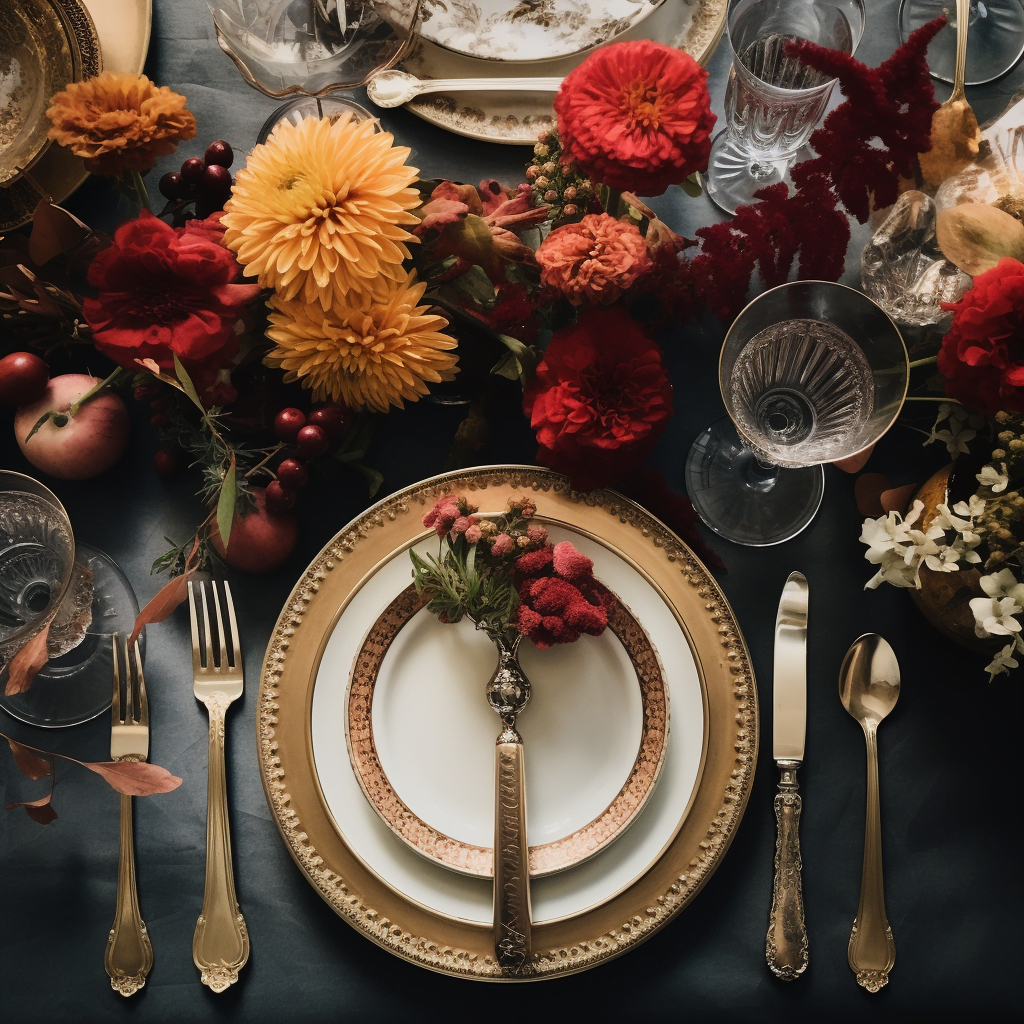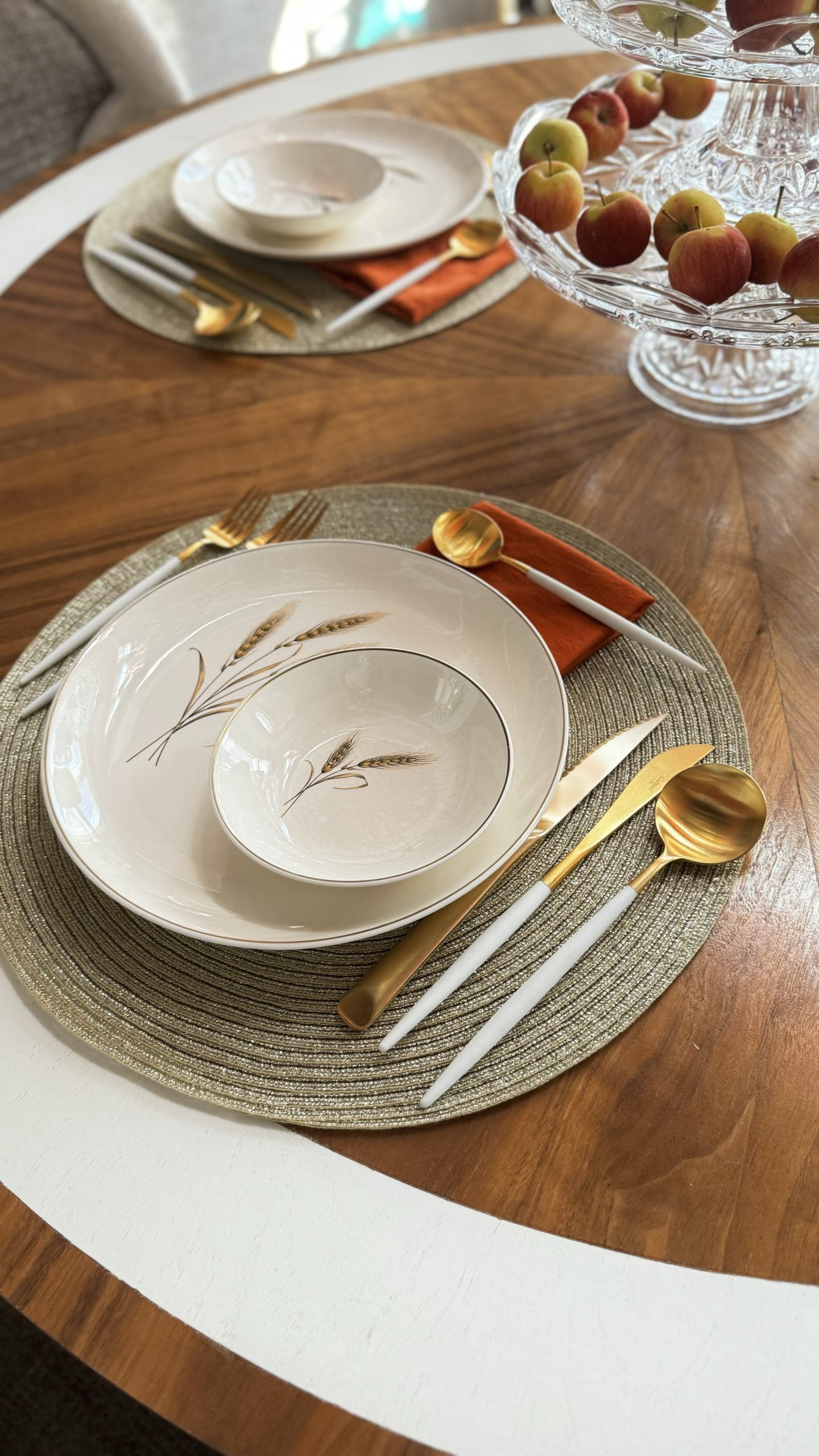Today, many of us don’t get caught up in choosing the right fork and knife to enjoy our dinner.
AI Generated by Linda Allen . “I dream of a beautiful world”
I think this is because of a couple of things: Not all of us are present at the dinner table the way we used to be back in the day or over generations of time.
AI Generated by Linda Allen . “I dream of a beautiful world”

Staying focused in the moment is a rarity these days and is kind of a big deal for mental health awareness. So small things do matter and maybe it’s not a bad thing to focus on your table setting so you can focus on meaningful conversations.
Below: Nowadays, your mobile phone seems to be a priority at the table because many of us can’t disconnect.
AI Generated by Linda Allen “Everything BUT Dinner“

For Thanksgiving, I recently examined the silverware set that was passed down to me from my great Aunt (Oneida ) which had utensils designed uniquely for each serving. It’s mind-boggling to me that back in time someone labored over the design of the silverware and how it was used.
But like chairs and furniture, the art of silverware has a unique spot in place in people’s lives. Silverware can help with focusing on, well… dinner. It also can be something new that gives you a sense of accomplishment when you purchase it, or it can be something old that’s handed down as a family heirloom that gives you a sense of history. Either way, I decided to address a little bit of history with dinnerware. There are different traditions that stand the weight of time through tables, settings, and dinnerware. But for the sake of time, I’m just going to focus on a short period in America after the Middle Ages when everyone brought their own fork to dinner.
The Formality of Colonial Silverware:
The early days of Colonial American table settings (approx 1750-1900) were displays of elegance and formality. With formality, came social status with a proper way of conducting yourself. Children were taught early table etiquette. Using the proper silverware and following specific dining protocols became a way to display good breeding and sophistication. These norms were often taught from a young age and were expected to be followed during formal gatherings. Inhibiting internal feelings was the preferred way to act. Elaborate tableware and silverware were used, where each utensil had its designated place. This meticulous arrangement was made certain that each plate of food was served with specifically designed utensils.
How to Set a Traditional Formal Place Setting:

AI Generated by Linda Allen: “If Fall were a place setting”

The Progression of Informal Dinner Utensils:
As time progressed, the American dinner scene gradually shifted towards a more casual approach. The midcentury period witnessed a decline in the amount of utensils used during meals. Silverware became less extravagant, and the focus shifted towards simplicity and practicality. The once elaborate table settings gave way to a more relaxed dining experience.

Casual Dining Flatware Settings:
In today’s United States, casual dining has become the norm. Conversations are more informal. Most households opt for a simplified table setting, with only the essentials. A typical place setting includes a fork, knife, and spoon, arranged from left to right. This minimalist approach allows for a more laid-back atmosphere, encouraging a relaxed conversation and dining experience. From fluent families to struggling families, each dinner table has its own qualities; and one is not better than the other. There’s also something special about not all of the utensils, matching that shows the personality of the person who set the table.


Maybe there’s something to be said or table settings that have a personal meaning for each meal. Allowing one to focus on the love that was placed in making a dish and eating it with an appropriate unique utensil would clearly be the art of dining. Chefs in fine dining establishments focus on a specific utensil for a specialty dish. Setting a table with cherished dinnerware utensils makes us feel special, and can be conversational; Also helps us to stay present with loved ones and personal friends.
Below: My parents’ wheat dishes collected one by one from a local gas station back in the Midcentury with S & H Stamps complemented with today’s Flatware by Cutipol.
Wheat signifies Abundance

This doesn’t have to be a daily event. Many of us don’t have time to set the table let alone eat regularly at a certain time every night. But, periodically it can be a little mental health for the table guests. Consider it “personal art” that can promote well-being. We have to eat, anyway.


